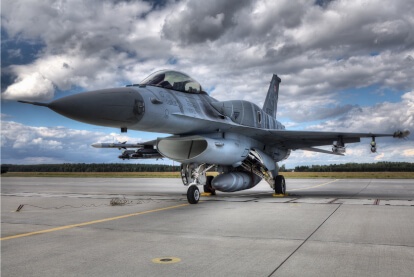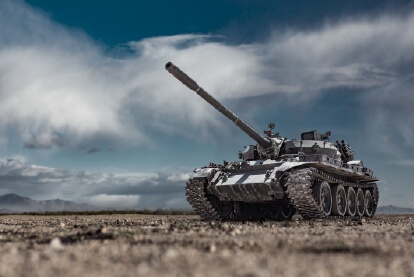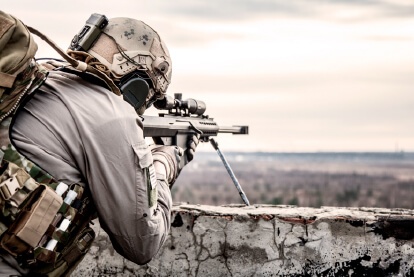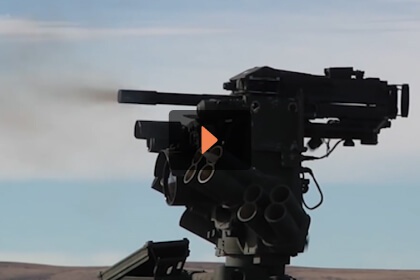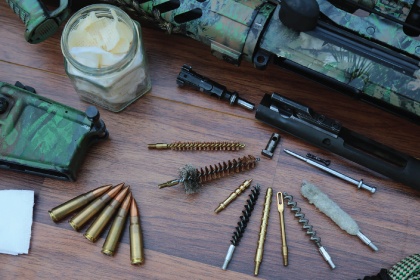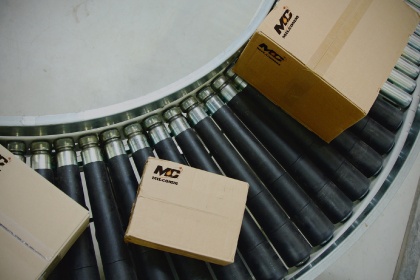We’re often asked to recommend the most effective cleaner or maintenance procedure for removing sand and dirt from working gun parts.
Before we divulge the possibly surprising answer, consider what a bunch of Marines told us at Camp Lejeune, North Carolina, two years ago following their return from recent deployment in Iraq. Standard issue for these warriors is the Bereta M9 pistol, and standard maintenance calls for “CLP” Cleaner/Lubricant/Protectant be used to maintain the gun. Now, life in a war zone, becoming someone else’s target, is no academic exercise. You read and react, change and adapt. And very quickly these soldiers learned that the more “CLP” they doused their guns with, the more sand accumulated on gun parts — and the more stoppages occurred. They volunteered to us that there was ONE EFFECTIVE way to keep the sand off and their guns firing. The answer in a moment.
This came to mind yesterday when a retired Army armorer wrote us an unsolicited email about his experience in the desert. Here’s part of what he wrote: “I served for six years, working mostly on the Apache system, and for a long time we used the generic CLP stuff I’m sure you are familiar with … that and the mil-spec lube together would soak up dirt out in Iraq … and then we started using your stuff and it dried pretty much on contact with the metal, which resulted in a lot less gun jams, not to mention cleaner guns come time for maintenance. We started using your grease instead of the mil-spec grease on the parts that required packing, i.e., parts that used bearins and seals. So naturally we figured if it’s good enough for a 30mm gun, we started using it on our M4’s (AR’S), and, same thing, we didn’t clean our rifles near as often because they hadn’t collected the regular dust and dirt. I recently moved to the southwest and was frustrated by what the stores were selling, so I was glad to find you yesterday through Google. You’ve got a damned good product, and I’m eager to use it on all my firearms…and I’m not surprised the NRA likes you, too.”
Now back to the discussion of sand and dirt on your gun parts. Lesson learned from both the Marines and this Army soldier is simple: don’t waste time getting sand off your guns — keep the sand from fouling your guns in the first place, to the fullest extent possible.
This next part might sound hard to believe, but stay with us. To prevent sand and dirt-build up, coat the working parts (and bore) of your firearms with GREASE. Huh? Isn’t grease sticky? Won’t grease turn my firearm into the metal equivalent of a sugar cookie?
Yes, if you use a standard, petroleum-distolate, thickly constituted grease. You might just as well use pork fat or lard and roll your gun around in a sandbox. BUT the opposite happens if you make use of a well-engineered, synthetic light grease (officially categorized as an NLGI Grade 1 grease) that has the consistency of cold cream.
A synthetic gun grease such as TW25B will actually penetrate the pores of the metal and coat the surface in such a way that sand and dirt can’t adhere to the surface.
Think of the way an egg being fried in an iron frying pan sticks to the iron surface versus the way a TEFLON pan prevents the sticking. The synthetic light gun grease is working to make gun metal surfaces impervious in roughly the same way. It’s IMPORTANT to polish the gun grease into the metal and not leave gobs of it on the surface (which will attract dirt).
The same grease coating action will also keep firing debris from fouling the metal and make the need for gun cleaning significantly less frequent.
If more shooting and less cleaning holds any appeal for you, make the application of synthetic light grease part of your regular firearms maintenance regimen.

